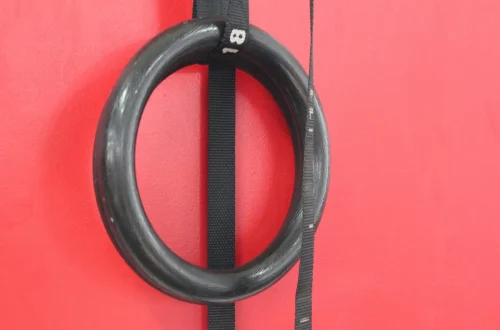
Pyrantel Pamoate Dosage Guide for Dogs: Safe Administration Tips
Pyrantel Pamoate is a widely recognized anthelmintic medication used to treat intestinal parasites in dogs. This drug is particularly effective against roundworms and hookworms, two common types of parasitic infections that can affect a dog’s health. Given the prevalence of these parasites, it’s essential for dog owners to be well-informed about how to administer this medication safely and effectively. Understanding the appropriate dosage and administration methods is crucial for ensuring the health and well-being of your canine companion.
When using Pyrantel Pamoate, it’s important to consider several factors, including your dog’s weight, age, and overall health. Each dog is unique, and what works for one may not be suitable for another. Additionally, proper administration can help prevent potential side effects, making it a vital topic for pet owners. With the right information, you can take the necessary steps to safeguard your dog’s health and enhance their quality of life.
While this article serves as a comprehensive guide to Pyrantel Pamoate dosage and administration, it is important to consult a veterinarian for personalized advice tailored to your pet’s specific needs.
Understanding Pyrantel Pamoate and Its Uses
Pyrantel Pamoate belongs to a class of drugs known as anthelmintics, which are specifically designed to eliminate parasitic worms. These parasites can lead to a range of health issues, including malnutrition, gastrointestinal problems, and even serious complications if left untreated. Roundworms and hookworms are particularly common in puppies and adult dogs, making Pyrantel Pamoate a staple in canine healthcare.
One of the appealing aspects of Pyrantel Pamoate is its relatively safe profile. It acts by paralyzing the parasites, allowing the dog’s immune system to expel them naturally. This mechanism minimizes the risk of side effects that can occur with other deworming medications. Despite its effectiveness, it is crucial to administer the drug according to precise guidelines to ensure optimal results.
Pyrantel Pamoate is available in various forms, including liquid and chewable tablets. The choice of formulation can depend on your dog’s preferences and specific needs. For example, some dogs may find chewable tablets more appealing, while others might be more amenable to liquid formulations. Understanding the different options can help you make the best choice for your pet.
Before administering Pyrantel Pamoate, it’s essential to confirm the presence of intestinal parasites. A veterinarian can perform a fecal exam to identify the specific type of worms affecting your dog. This step is significant because while Pyrantel Pamoate is effective against certain parasites, it may not be suitable for all types. For example, it is not effective against tapeworms, which require a different treatment approach.
Overall, understanding the uses and functions of Pyrantel Pamoate is the first step in ensuring your dog receives proper care. Awareness of its benefits, coupled with professional guidance, can lead to more effective parasite management.
Determining the Correct Dosage for Your Dog
Determining the appropriate dosage of Pyrantel Pamoate is critical for effective treatment. The dosage is generally based on your dog’s weight, and it is typically calculated at a rate of 5 mg per pound (or 10 mg per kilogram) of body weight. This means that a 20-pound dog would require approximately 100 mg of Pyrantel Pamoate.
It’s vital to weigh your dog accurately before administering the medication. Using a scale specifically designed for pets can ensure that you obtain a precise measurement. If you have a larger dog, you might need to consult your veterinarian for assistance in calculating the correct dosage, especially if your dog falls between weight categories.
Once you have determined the appropriate dose, you can administer the medication. For liquid formulations, use a syringe or dropper to ensure accurate dosing. If you’re using chewable tablets, make sure your dog takes the full dose at once. Some dogs may be picky eaters, so you might need to hide the tablet in a treat or food to encourage ingestion.
It’s also important to note that Pyrantel Pamoate can be given with or without food, although administering it with food may help mitigate any potential gastrointestinal upset. Always follow the instructions provided on the medication packaging or by your veterinarian, as they can provide the most accurate guidance tailored to your dog’s health status.
If you suspect that your dog has not ingested the full dose or if you are unsure about the correct dosage, contacting your veterinarian is essential. They can provide additional instructions and help you monitor your dog for any signs of adverse reactions.
Safe Administration Techniques
Administering Pyrantel Pamoate safely involves more than just calculating the correct dosage. It is also about ensuring that your dog receives the medication comfortably and effectively. One of the first steps in safe administration is to create a calm environment. Stress or anxiety can make it difficult for your dog to accept medication, so choosing a quiet space can help ease their nerves.
If you are using a liquid formulation, gently hold your dog’s head and carefully place the syringe in the side of their mouth. Administer the medication slowly to allow your dog time to swallow. Avoid forcing the liquid down their throat, as this can lead to choking. If your dog resists, take a break and try again later. Patience is key when it comes to administering medication.
For chewable tablets, it may be helpful to break the tablet into smaller pieces, especially if your dog is small or if the tablet is large. Offering the pieces as treats can make the process more enjoyable. If your dog is particularly stubborn, consider using a pill pocket or a small amount of peanut butter to disguise the tablet.
After administering the medication, monitor your dog for any immediate reactions. While serious side effects are rare, some dogs may experience mild gastrointestinal upset, such as vomiting or diarrhea. If these symptoms persist or worsen, contact your veterinarian for advice.
Additionally, it is crucial to follow up with your veterinarian after treatment. They may recommend a follow-up fecal exam to ensure that the parasites have been eliminated successfully. Regular check-ups and preventive care can help minimize the risk of future infestations.
Monitoring Your Dog Post-Administration
After administering Pyrantel Pamoate, monitoring your dog’s condition is vital to ensure their well-being. Observing your pet for any changes in behavior or health can help you identify potential issues early on. While most dogs tolerate the medication well, some may experience mild side effects, such as lethargy, vomiting, or diarrhea.
These side effects are generally transient and should resolve within a day or two. However, if your dog shows signs of severe reactions, such as excessive vomiting, difficulty breathing, or signs of an allergic reaction, it is imperative to seek veterinary care immediately. These situations, while uncommon, require prompt attention to ensure your dog’s safety.
In addition to monitoring for side effects, it’s essential to keep an eye on your dog’s overall health and behavior. If you notice any changes in appetite, energy levels, or bathroom habits, these could indicate a need for further evaluation. A veterinarian can provide guidance and determine whether additional treatments or interventions are necessary.
It is also a good idea to schedule regular veterinary check-ups as part of your dog’s ongoing health care routine. Your veterinarian can provide recommendations for preventive measures, such as regular deworming schedules, based on your dog’s lifestyle and risk factors. This proactive approach will help keep your dog healthy and minimize the likelihood of future parasite infestations.
As always, maintaining open communication with your veterinarian is crucial. They can provide you with tailored advice based on your dog’s individual needs, ensuring that you have the most accurate information regarding their health and treatments.
**Disclaimer:** This article is for informational purposes only and should not be considered medical advice. Always consult a veterinarian for any health concerns regarding your pet.




